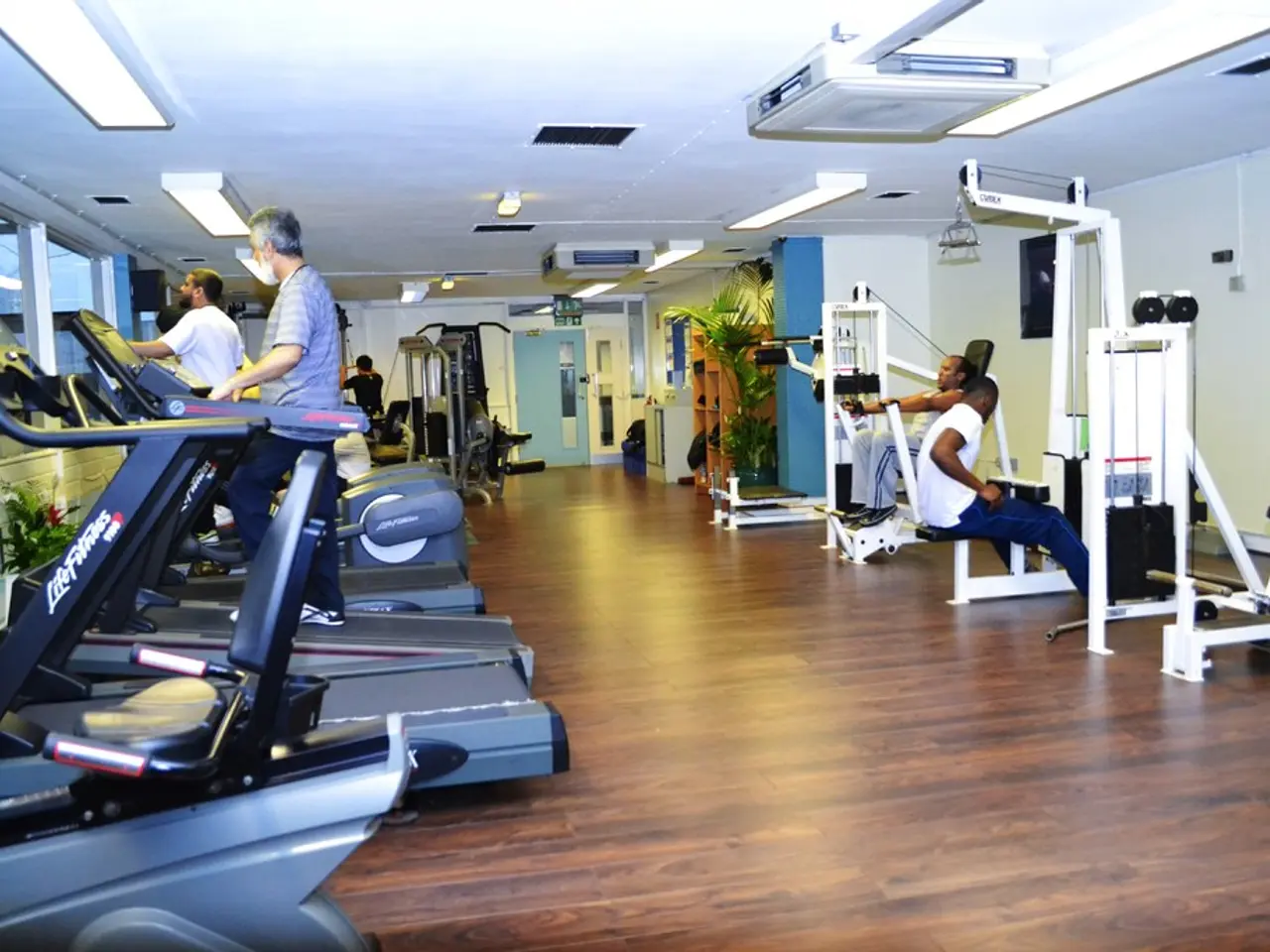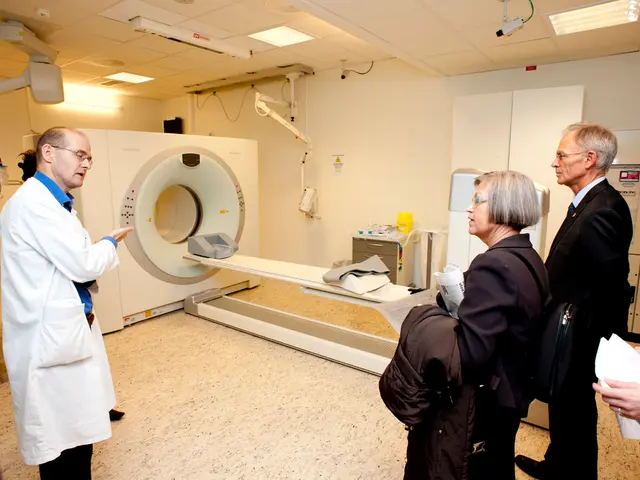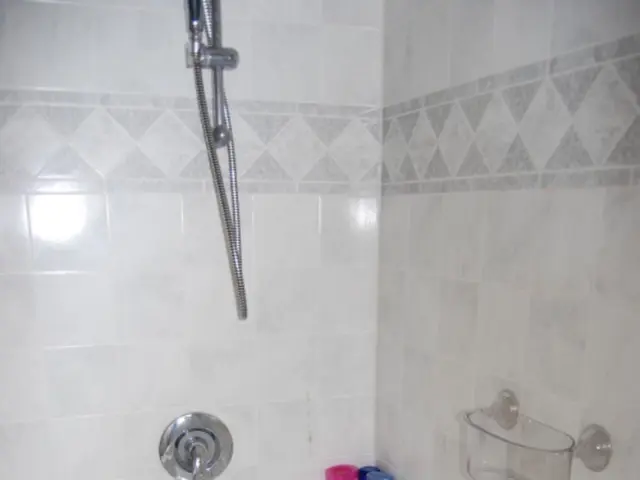Strategies for Boosting Lung Volume: Basic Workouts
In the face of respiratory illnesses, including COVID-19, and chronic lung conditions such as COPD and asthma, simple yet effective techniques like pursed lip breathing, diaphragmatic (belly) breathing, and interval training can significantly enhance respiratory health.
## Pursed Lip Breathing: A Handy Tool
Pursed lip breathing, a technique that involves breathing out through pursed lips, has been found to offer several benefits. It helps maintain open airways, preventing collapse and improving lung function [2][3]. By slowing the breathing rate, it reduces shortness of breath and increases control over breathing [2][3]. Additionally, it provides stress relief by focusing attention on the breath, aiding in stress and anxiety reduction [3]. Lastly, it reduces the work required by the lungs during exhalation, making breathing more efficient [1][2].
## Diaphragmatic (Belly) Breathing: A Deep Dive into Lung Efficiency
Diaphragmatic (belly) breathing, which focuses on using the diaphragm effectively, offers several advantages. It enhances lung function by improving oxygen intake and carbon dioxide expulsion [3]. By activating the vagus nerve, it promotes relaxation, reducing stress and anxiety, and lowering heart rate and blood pressure [3]. Deep, controlled breaths increase oxygen delivery to the body and brain [3]. With practice, the breathing pattern becomes more natural, reducing conscious effort [2].
## Interval Training: A Breath of Fresh Air for Physical Activities
While interval training is not a breathing technique per se, it can be combined with breathing exercises like pursed lip or diaphragmatic breathing to improve respiratory health during physical activities. Interval training helps increase endurance by allowing the body to become more efficient at using oxygen [2]. It enhances physical tolerance during activities that typically induce shortness of breath.
Staying physically active is also beneficial for improving and preserving lung health. However, for those experiencing breathlessness or shortness of breath during exercise, interval training may be a better alternative than steady exercise, offering a more manageable approach.
## Staying Hydrated and Consulting a Doctor
Drinking plenty of water is crucial for maintaining lung health, while speaking to a doctor before trying any new breathing exercise is always advisable. Certain health conditions, such as COPD and asthma, can restrict lung capacity. For individuals with severe respiratory symptoms, oxygen therapy or a mechanical ventilator may be necessary.
Yogic breathing (Pranayama) is being explored as part of an integrative approach for managing people with COVID-19, but more research is needed to determine its benefits.
To practice pursed lip breathing, sit up straight, breathe in deeply through the nose, purse the lips, breathe out through pursed lips, and make the exhalation twice as long as the inhalation. To do belly breathing, rest a hand or a lightweight object on the stomach, breathe in slowly through the nose, note how far the stomach rises, breathe out through the mouth, and try to get the stomach to rise higher with each inhalation.
- Pursed lip breathing can help predict a decrease in diseases like Crohn's, psoriasis, psoriatic arthritis, and even obesity and diabetes by promoting better respiratory health.
- A study revealed that pursed lip breathing can be a useful tool in managing degenerative conditions like macular degeneration, as it improves oxygen supply and reduces stress.
- In the realm of health-and-wellness and fitness-and-exercise, pursed lip breathing can be a preventive measure for various medical-conditions, particularly respiratory conditions.
- Science and medical research are currently exploring the predictive and therapeutic benefits of pursed lip breathing in health domains beyond respiratory illnesses.
- Furthermore, pursed lip breathing combined with simple exercises like yoga can be part of the mental-health therapies-and-treatments for managing stress, asthma, and COPD.
- Diaphragmatic breathing, like pursed lip breathing, can offer essential nutritional benefits, as it enhances the absorption of oxygen and promotes a healthier digestive system.
- In terms of hepatitis and other liver diseases, diaphragmatic breathing can be a crucial supplement to conventional treatments due to its stress-reducing properties and improved oxygen delivery.
- Implementing pursed lip breathing as part of interval training can help boost performance in fitness activities, reducing the likelihood of respiratory-conditions such as asthma.
- Maintaining a hydrated state is vital during practices like pursed lip breathing, as a dry mouth can obstruct proper breath control and exacerbate existing respiratory symptoms.
- Consulting a medical professional before incorporating pursed lip or diaphragmatic breathing into your routine is essential, especially for individuals managing chronic conditions like Crohn's, hepatitis, or arthritis.
- Remember that while pursed lip breathing, diaphragmatic breathing, and interval training can offer significant benefits, they are not a substitute for professional medical advice or treatments for various medical-conditions.







